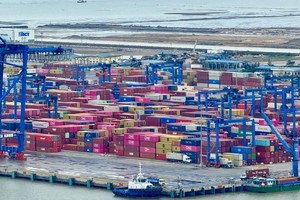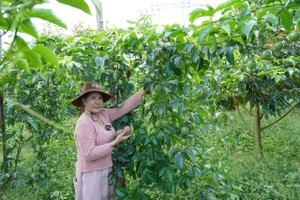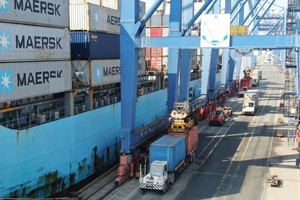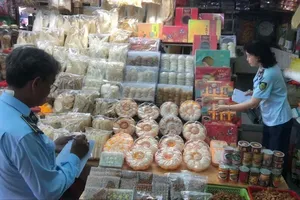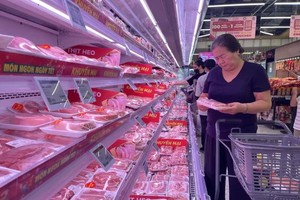 |
At the event |
On April 26, a conference was held by the Ministry of Industry and Trade to assess the state of rice exports in the first quarter of 2023 and discuss the management direction of rice exports in the near future. The conference was attended by leaders of provinces in the Mekong Delta region and notable rice exporters.
During the conference, Mr. Tran Quoc Toan, Deputy Director of the Import-Export Department at the Ministry of Industry and Trade, presented a report indicating that in the first quarter of 2023, rice export turnover had exceeded 1.85 million tons, valued at US$981 million, up 23.4 percent increase in volume and a 34.3 percent increase in turnover compared to the same period in 2022. The average export price was $529 per ton, up 8.8 percent from the average price during the same period in 2022.
Overall, it is estimated that the total cultivated area in 2023 will be 7.18 million hectares, with an average yield of 6.01 tons/ha, resulting in a projected rice output of 43.2 million tons. Based on the balance of supply and demand for rice exports, it is anticipated that 2.129 million tons of rice will be exported in the second quarter of 2023.
Of the total export volume, white rice is expected to make up the largest proportion at approximately 53.7 percent, followed by various types of fragrant rice at around 27.6 percent. Sticky rice is projected to account for approximately 8.5 percent, while broken rice is expected to represent about 6.9 percent. Finally, fortified rice is estimated to account for only 0.2 percent of the export volume.
Asia remains the largest export market for rice, with almost 1.57 million tons exported in the first quarter of 2023, indicating a 52.2 percent increase compared to the same period in 2022. Notably, several importing countries in Asia experienced substantial growth during this period, such as the Philippines with a 33 percent increase, Indonesia with a 180-fold increase, Singapore with a 30 percent increase, and China with almost double the amount of imports compared to the same period in 2022.
Africa was the second-largest market, with over 157,000 tons of rice exported. Despite accounting for a relatively small proportion, the European market saw an 11 percent increase in rice imports, reaching a total of 32,000 tons in the first quarter of 2023, compared to the same period in 2022.
The European market has a strong demand for high-quality rice, particularly fragrant rice, such as that from the Netherlands and Poland, which has doubled in volume, and Belgium, which has seen a 58 percent increase compared to the same period in 2022.
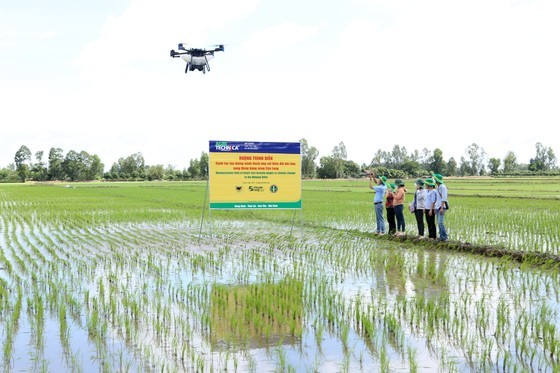 |
Binh Dien Fertilizer Joint Stock Company produces rice following high-tech farming process. |
According to Mr. Nguyen Sinh Nhat Tan, Deputy Minister of Industry and Trade, the global economic situation has continued to be complicated and unpredictable in the first months of 2023. However, with timely support policies from the Government, along with market-opening solutions and effective circulation of goods, Vietnam's rice production and export have achieved remarkable results in the first quarter of 2023. This success has helped to encourage the consumption of paddy and commodity rice at favorable prices for farmers.
The structure of exported rice is moving in a positive direction, with regular white rice still maintaining a stable proportion, while fragrant and sticky rice is increasing in export value. This demonstrates that Vietnam's rice quality is improving and meeting the demands of even the most discerning markets while also showing the potential for expanding the market and increasing Vietnam's market share for high-quality rice.
Despite the significant progress made in rice export, there are still challenges to be addressed. For example, the market strategy is not stable and long-term, and there are indications of dependence on a key market, such as the Philippines or China.










